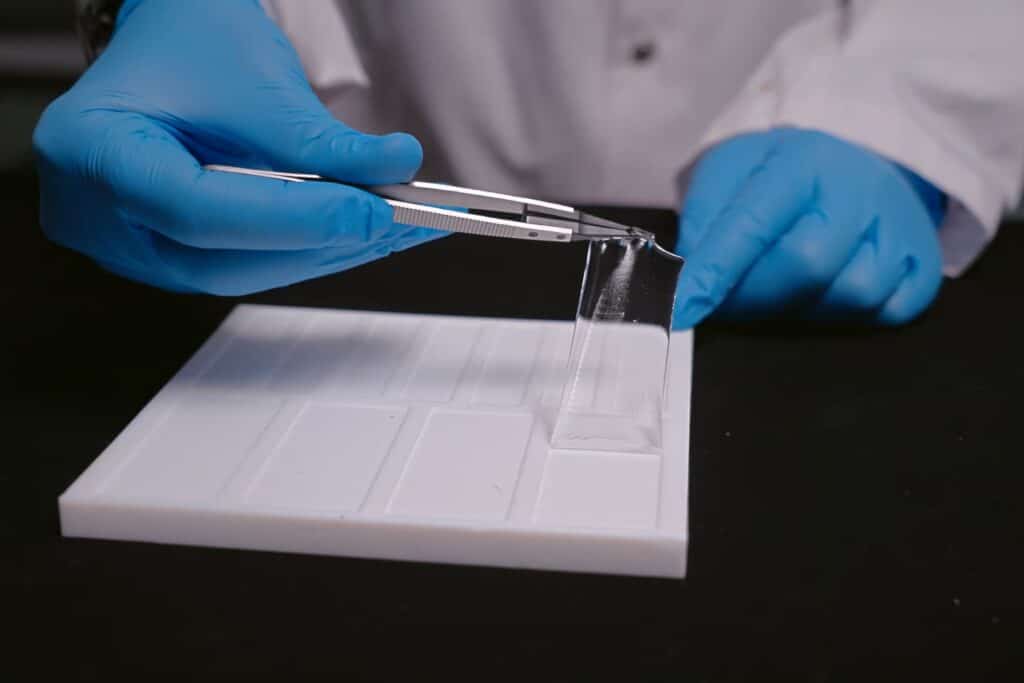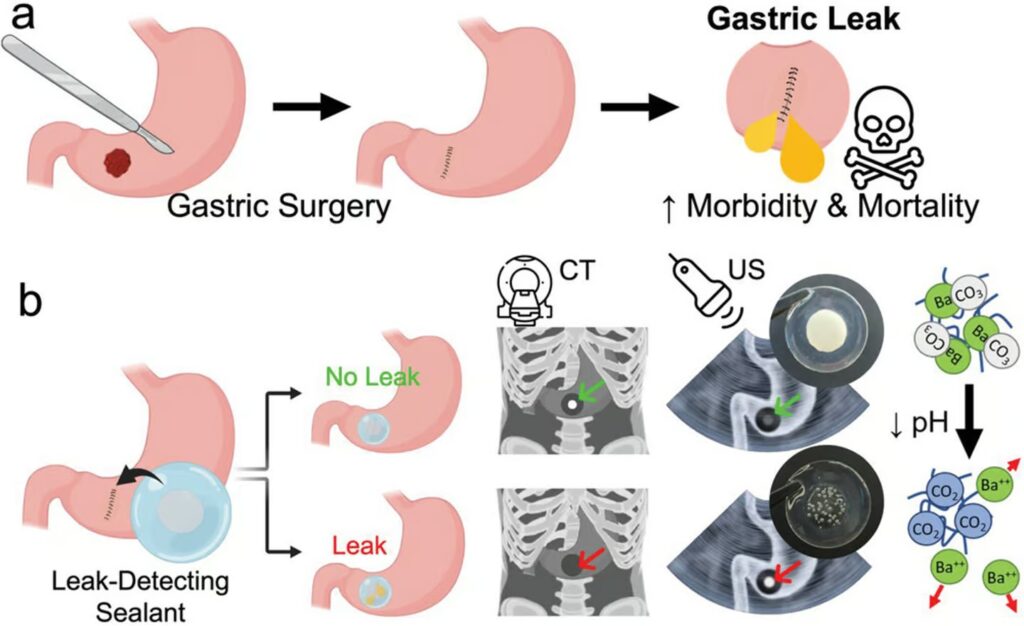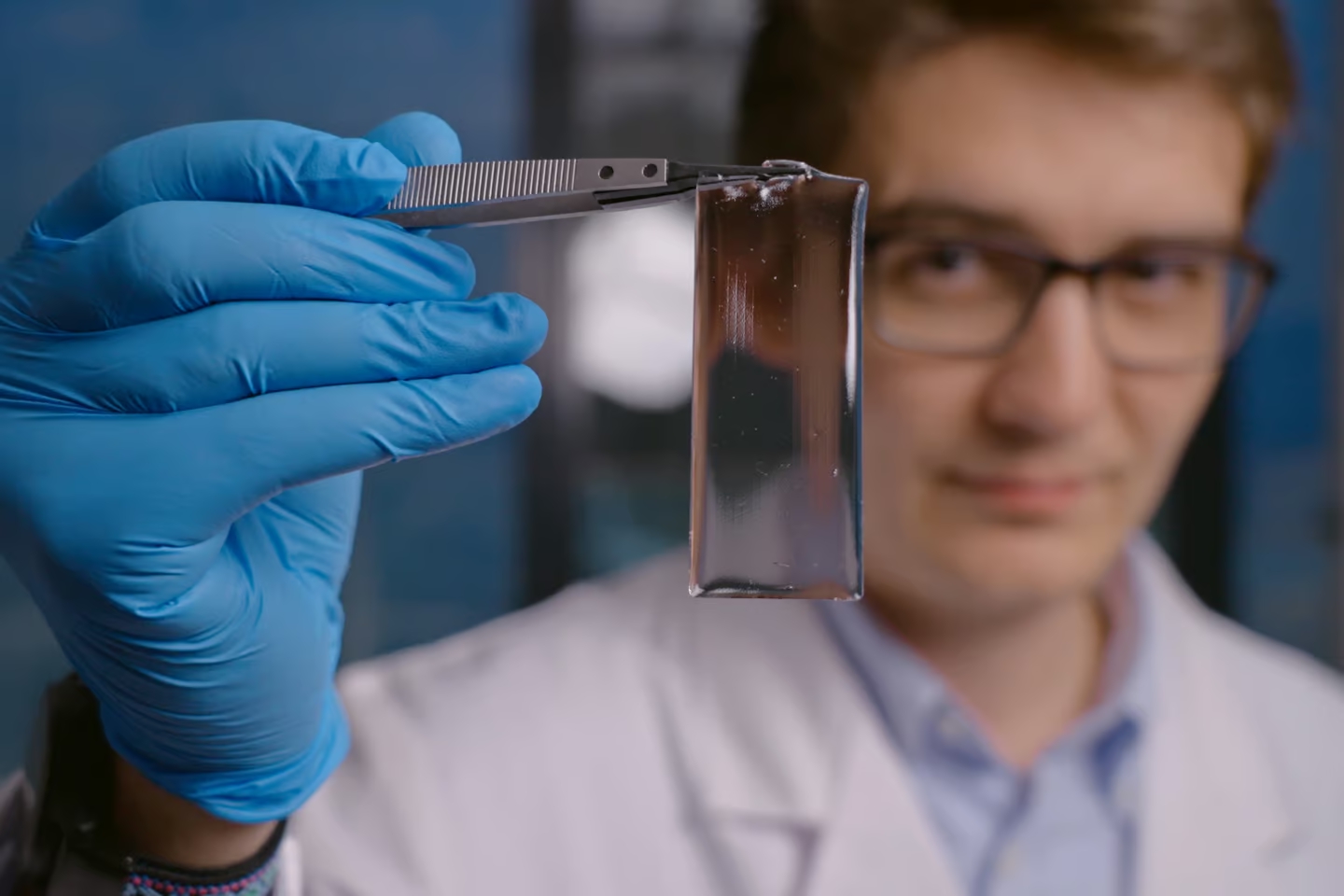The nightmare of every surgeon who performs abdominal surgery is not to immediately notice any suture leaks. It's like sewing a balloon with a hole in it from the inside and then inflating it: if the needle has left a small hole, you won't see it until you start to feel the rush of air escaping. Researchers fromSwiss Federal Institute for Materials Science and Technology (Empa) and ETH of Zurich have developed a real “patch” in hydrogel which not only helps close the wound, but can quickly detect any leaking stitches inside the abdomen.

A “magic” patch that saves human lives
The so-called anastomotic leak, which can occur when surgeons remove a section of intestine and then suture it, can cause serious problems. Highly acidic stomach fluids can begin to leak into the abdominal cavity, causing inflammation and infection in the tissues (peritonitis). In some cases even potentially lethal blood infections (sepsis).
Many times, these leaks are only discovered when patients start experiencing symptoms such as pain and fever, and their health is already seriously compromised.

This is how to see the invisible
“All surgeons keep an eye on the surgical field during more complex procedures. Yet, as soon as the abdominal cavity is closed, they are 'blind' and may not notice the leak until it is too late,” he says Alexandre Anthis, one of the authors of the study. That's where the magic patch comes into play.
The high-tech patch is made of a layered hydrogel matrix, with carbonate salts inside that act as non-electronic sensors. When these salts come into contact with acidic digestive fluids, they decompose, producing carbon dioxide bubbles that end up trapped in the hydrogel patch.
These bubbles can be visualized with a simple ultrasound because they stand out from the surrounding tissue due to their high contrast.
But that is not all. In the case of the presence of digestive fluids, the patch also changes shape, becoming circular or linear, easily detectable with a CT scan. This means it offers a “dual mode” of leak detection. In fact, they are visible with both ultrasound and CT scan (including very low radiation dose CT scan).
Laboratory tests
When testing in porcine models, the researchers found that the carbonates reacted exclusively in the presence of acid, thus reducing the likelihood of false positives. Depending on the area of the leak, the reaction occurred within a few minutes to a few hours, long before clinical signs of a leak became apparent.
The patch sticks tightly to the wound site, sealing it and preventing it from moving. This, say the researchers, also reduces the risk of post-surgery complications and shortens hospital stays.
More research is needed to determine the long-term durability of the hydrogel patch, but the researchers are confident the device will offer a cost-effective way to detect leaks quickly, allowing for timely treatment.
The results of the study were published in the journal Advanced Science and I'll link them here.


